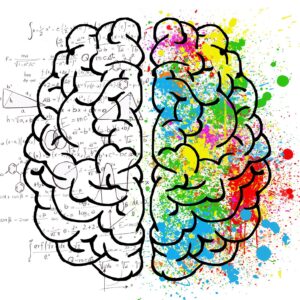Artificial Intelligence (AI) is a powerful tool that can be used to analyze and predict complex patterns in large datasets. One area where many people believe AI could be used is in predicting lottery numbers. In theory, AI could be used to find an algorithm that perfectly describes all past extractions and predicts the next winning numbers. However, this may not make you rich.
AI and the lottery
The lottery is a game of chance, and the numbers are drawn randomly. The odds of winning are usually very low, and the chance of winning multiple times is even lower. However, some people believe that there are patterns in the lottery draws that can be predicted and used to increase their chances of winning.
One way AI could be used in the lottery is by analyzing the previous draws and looking for patterns. AI algorithms can search for relationships between the past winning numbers. But here’s the catch: the lottery is designed to be completely random, and there is no guarantee that any pattern or trend identified in past draws will continue in the future.
The problem of overfitting
Even if an AI algorithm could perfectly describe all past lottery draws, it still would not be able to predict the next winning numbers accurately. This is because of the problem of overfitting.
Overfitting is a common problem in machine learning and AI. It occurs when an algorithm is trained on a specific dataset and becomes too complex, fitting the training data too well. As a result, the algorithm does not generalize well to new data, and its predictions become inaccurate.
In the case of the lottery, an AI algorithm that perfectly describes all past extractions is likely overfitting the data. It is too complex and too specific to the past draws, and it will not be able to generalize to new, unseen data – i.e., the next lottery draw.
The limitations of AI
The problem of overfitting highlights an important limitation of AI. While AI can be a powerful tool for analyzing and predicting complex patterns in large datasets, it cannot replace human intuition and understanding.
Understanding the lottery is not just about analyzing past data and finding patterns; it is also about understanding the rules of the game and the underlying probabilities. The lottery is designed to be random, and while there may be some patterns in the past draws, these patterns are not reliable predictors of future draws.
It is important to have a full understanding of the problem one is analyzing, and it is not possible to fully delegate anything to AI. AI can be a useful tool to aid in decision-making, but it should be used in conjunction with human expertise and knowledge.
Conclusion
In conclusion, while AI may be able to analyze and predict patterns in large datasets, it is not a reliable tool for predicting something like lottery numbers. The lottery is designed to be random, and any patterns identified in past draws are not necessarily reliable predictors of future draws.
The problem of overfitting highlights an important limitation of AI – it can be too complex and specific to past data, making it unreliable for predicting future outcomes. It is important to have a full understanding of the problem one is analyzing and to use AI in conjunction with human expertise and knowledge.
In the case of the lottery, the best way to increase your chances of winning is to buy more tickets – after all, it’s all about luck!





